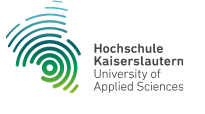
Passion
Career
Region
Universities in the region
team up to boost career opportunities
A professorship, but not at a “classic” university?
What many people don’t know:
Universities of Applied Sciences (UASs), also known as technical colleges, offer excellent opportunities to achieve this and other career goals.
Three state universities in Saarbrücken, Kaiserslautern and Trier have joined forces under the project name c to draw attention to career opportunities in practice-oriented research and teaching.
The network is funded by the federal-state program "FH Personal".
Passion, career and region are the guiding ideas behind "Campus Hoch 3".
Find out more about our cooperation here.
17.806 Students
160 Promotions
467 Professors
1.649 Employees
241 Courses
275 Research Priorities
… these are the combined figures for the Kaiserslautern University of Applied Sciences, the htw saar and the Trier University of Applied Sciences.

Being able to work independently and realize one's own dreams is what drives many people into research and development. When the joy of sharing knowledge and mentoring students is added, a professorship at a university of applied sciences (HAW) can become a dream job.
An example at Kaiserslautern University of Applied Sciences shows the opportunities this position offers to people who are passionately curious.
The HAW
Hochschulen für angewandte Wissenschaften or HAWs (Universities of Applied Sciences) are practice-oriented educational institutions that combine academic training with applied research and collaborate closely with business and society. By training the next generation of specialists and managers and cooperating with companies and sponsors in the region, they play a significant role in the economic and social development of the region.

While young academics jostle for the few positions at classic universities, the career paths at UASs are often less well known. But they open up great opportunities, especially for those with work experience who, after earning their doctorate, started off in business or society but now want to come back to higher education.
In an interview with a young scientist from India, the Trier University of Applied Sciences showcases the opportunities that universities of applied sciences offer at different career levels and how international research is also promoted.
Cooperative doctoral program: A doctorate is also possible at a UAS – ideal if you want to pursue an academic career. These doctorates that are carried out in cooperation with universities.
PostDoc: After completing a doctorate, young researchers can continue their education at universities of applied sciences to gain additional qualifications in applied sciences. At the universities of applied sciences in Saarbrücken, Kaiserslautern and Trier, this is often possible in joint projects with industry and international research groups.
Junior or tandem professorship: This new format is a qualification program with industry partners. It combines two half-time positions: the first consists of a half professorship at a university of applied sciences, the second of a part-time position at a company or with another employer outside the university. It is limited to three years. During this time, an important requirement for a regular professorship at a university of applied sciences is acquired: three years of professional experience outside the university.
HAW professorship: A HAW professorship focuses on practice-oriented teaching and research in close cooperation with students and industry.

Region
The tri-city area of Trier, Saarbrücken and Kaiserslautern is located in the heart of Europe – a beautiful landscape and culturally interesting. The proximity to France, Luxembourg and Belgium is reflected in strong international networking in the working and research worlds. Many innovative companies are based here – and are open to cooperation with universities.
Our universities of applied sciences are deeply rooted in this area. Under the heading of “Research for the Region", the htw saar is presenting a project for protection against heavy rain and flooding. Its goal is to prevent flood disasters





